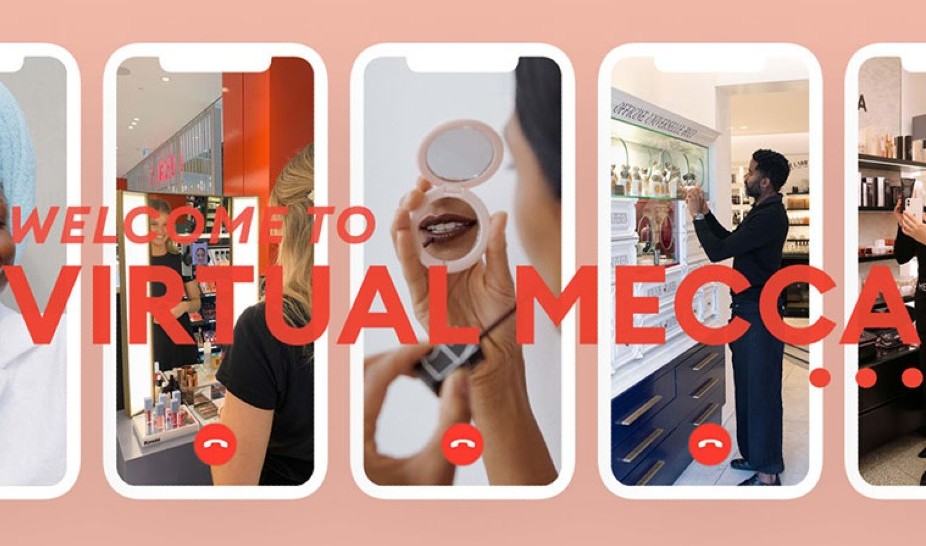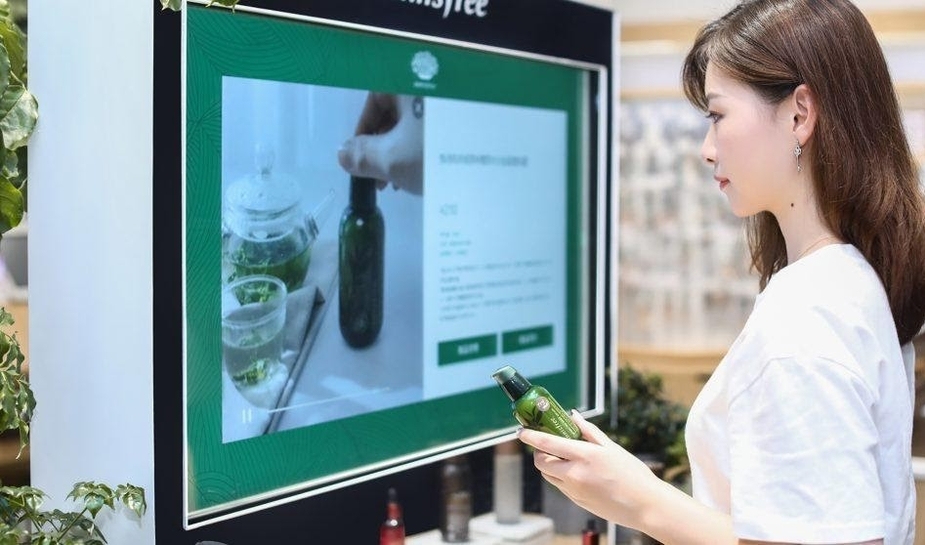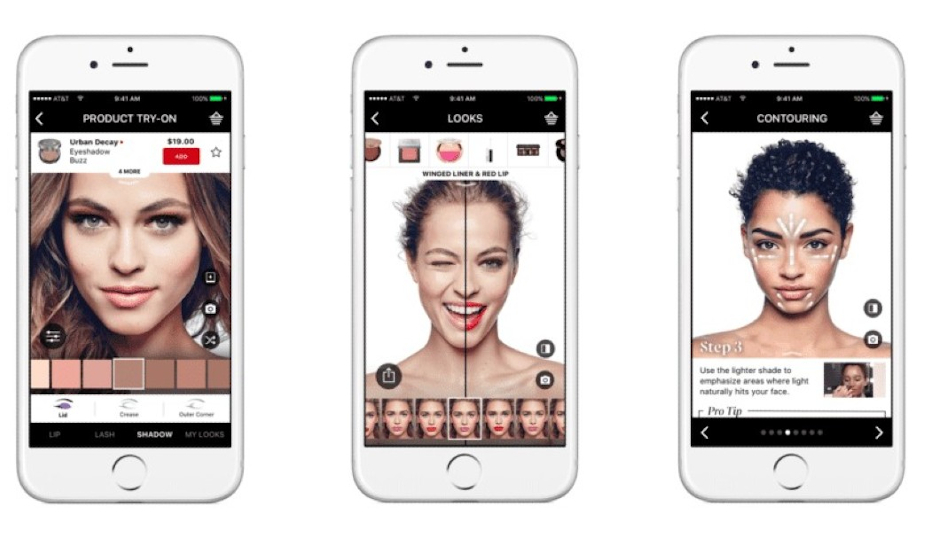‘New Retail’ and the digitisation of beauty are redesigning the consumer shopper journey.
Pressed for time? Check out our quick read.
{{cta(‘ace88b27-1a47-4267-90c1-4ca163719838’)}}
No doubt we can all agree that nothing compares to picking up a perfume bottle or trying on a lipstick before buying it. As the old saying goes – try, like, buy. But the oh-so very popular in-store makeovers and testers that stimulate our senses and make us swipe our credit cards, are suddenly irrelevant in our current life context. Hence why Mecca has turned to personalised virtual consults; whilst brands like Estee Lauder, Sephora and P&G have renewed focus on the Snapchat Discover feature for advertising, where beauty content has become especially popular.

But to what extent can digital innovation disrupt and reshape the beauty industry as a whole? To answer this question, looking at how beauty brands are merging offline and online strategies and adopting new technologies, and how consumers are embracing these changes; it seems as if digital innovation is shaking up the ‘old normal‘ quite a lot.
Lockdown or not, shopper’s behaviour is changing dramatically. Consumers want new and more personalised products faster, and the new technology that brands are offering, is giving them just that, and some…
New Retail is completely redesigning the consumer journey.
This business model developed by Jack Ma, founder of Chinese e-commerce giant Alibaba, relied on being able to offer a new shopping experience where online and offline commerce can merge. For him, the future of retail is not about channels, but about experience.
Beauty giant Sephora is an early adopter of this approach. After merging its in-store and digital retail teams, they were able to focus on linking their physical and digital retail experiences, whilst putting the customer at the heart of the engagement.
Their culture of experimentation, mixed with their omnichannel strategy and focus on a personalised experience, seems to be a recipe for success. For example, a customer can try a beauty product in-store. If they like it, the shop assistant can then add that product onto the customer’s profile so it’ll always be available for them to purchase readily online (or naturally in an outlet too). Additionally, Sephora Reservation Assistant, the beauty giant’s chatbot, helps clients easily book in-store makeovers – a seamless, redefined experience for their consumers.
Some trends to watch.
1. Alexa, let’s get ready…
The growth of smart assistants such as Amazon Alexa and Google Home, is forcing beauty brands to pioneer in the tech space. From voice-assisted mirrors to smart hairbrushes, we are seeing voice-based innovations emerge as one of the top beauty trends this year.
The Small Genie Queen is a smart mirror that responds to voice commands, and auto-adjusts its lighting for optimal make-up application based on real-time weather conditions. Alibaba worked with 16 beauty brands to create a system for the mirror that incorporates beauty tips, branded content, skincare assessments, UV-exposure forecasts and beauty-routine reminders.

2. Revamped loyalty programs
Rewarding simply on purchase is not enough anymore. Many beauty brands are redesigning their loyalty program to be more competitive, retain customers and drive further brand awareness. We are now seeing programs using several channels including social, mobile, ecommerce and in-store, and rewarding members for social engagement and other forms of interaction with the brand, both on and offline.
Lancôme Elite Rewards loyalty program allows members to earn points every time they shop, connect and share. ‘Treats’ can be received simply by watching a video or writing a product review, rewarding all forms of interactions across its multiple channels.
3. In-store retail technology
In-store technology is part of the New Retail strategy. We will see the end of the static store, and the rise of lively, hyper-connected in-store shopping experiences, where the entire consumer journey is redesigned, almost always linking back to online (and in doing so capturing consumer data plays a part here too). “Consumers are looking for retail stores to be creative spaces. They are looking for experiences. Digital is a critical element in retail — however, it is not just for the sake of adding new, cool technology. Our intention is to help our clients.” Bridget Dolan, SVP Omni Experience & Innovation, Sephora.
Cosmetic giant, Innisfree, has embarked on a digital makeover in China, with interactive technology like magic augmented-reality mirrors, personalised facial scanners to find the perfect colour match, interactive vending machines, and RFID shelves to give more information about the products. QR codes let customers keep their personalised reports or track the product to purchase in-store or online.

4. Influencer and shopstreaming
In a sea of beauty bloggers and makeup tutorials, fresh content is key to keep fans engaged. But beauty brands need to develop an authentic content and influencer strategy, that is intertwined both on and offline to make the consumer experience seamless. Thinking long term, and across channels can really benefit both the brand and the consumer. If an influencer is partnering for a product launch, why not livestream it, have them make an appearance in store, or use them for a social content series?
With the rise of shopstreaming, we’ve seen that streaming combined with ecommerce is the new ‘power couple’ of retail. Store staff or micro-influencers can really play a role here.
5. Virtual try-ons
Augmented reality-based virtual try-on apps just keep getting better, so they too are increasing in popularity both in-store and online. From Sephora’s Virtual Artist app, to YSL integration with Youcam, to L’Oreal Modiface, users or beauty advisers can use AR to try on products and drive purchase. Estee Lauder also partnered with Perfect Corp. to create an AR mobile training program for beauty advisers.

So, by all accounts we can surmise that digital is here to stay and ‘New Retail’ really is completely redesigning the consumer journey. The key to surviving this beauty industry ‘makeover’ it seems, is merging offline and online strategies, and embracing new technologies. Using big data and adopting a shopper-centric approach also helps consumers learn more about themselves, and aids brands in creating highly customised beauty solutions both on and offline.
The adoption of digital innovation has disrupted and reshaped the industry as a whole, and is giving savvy consumers a new way to experience beauty. Who knows, in the not too distant future, the ‘mirror on the wall’ might really know who is the fairest of them all…